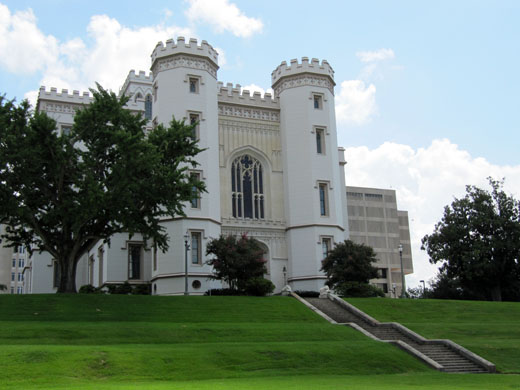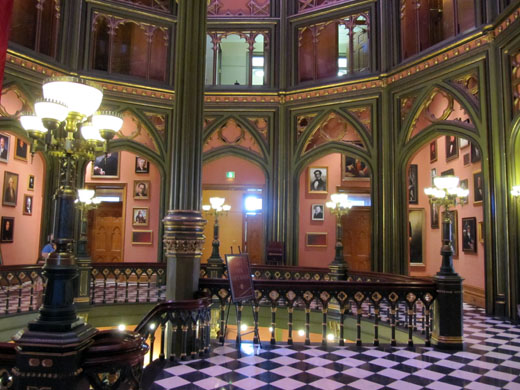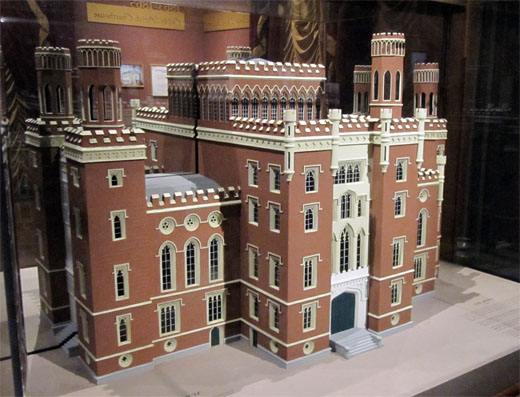Mark Twain was beguiled by medieval minds. Most Americans remember his satiric use of medieval spolia in A Connecticut Yankee in King Arthur’s Court, but Twain returned to the Middle Ages with telling regularity. He celebrated the jubilee of Queen Victoria by writing in the voice of a noble at a 1415 Agincourt victory parade, and he considered Personal Recollections of Joan of Arc his favorite of his own books. Like many late 19th-century Americans, even non-Catholics, Twain was obsessed with the French saint, finding “no blemish in that rounded and beautiful character” and calling her “easily and by far the most extraordinary person the human race has ever produced.”
Later, Twain taught his children medieval English history by linking pictures to pathways in his yard, and he even journeyed to Bayreuth, where his only mild appreciation of Wagner’s Tannhauser and Parsifal made him feel “like a heretic in heaven,” even as he declared the pilgrimage “one of the most extraordinary experiences of my life.”
As Twain knocked around Europe, he sometimes grumbled when the Middle Ages intruded on his vision of a more rational world. In Switzerland, after hearing a tale about a skeleton who testified in a medieval trial, he spat that it spoke of “a time so remote, so far back toward the beginning of original idiocy, that the difference between a bench of judges and a basket of vegetables was as yet so slight that we may say with all confidence that it didn’t really exist.” Still, even Sam Clemens, hostile to notions of nobility, could get swept up in the romanticism of Europe’s medieval past, provided it stayed on the far side of the Atlantic.
I pondered Twain’s medievalism last week while passing through Baton Rouge, a city he knew from his riverboat days. In Chapter 40 of Life on the Mississippi, Twain revisits the city, alive with magnolia blossoms: “For we were in the absolute South now—no modifications, no compromises, no half-way measures.” Like Twain, I found “a tropical sun overhead and a tropical swelter in the air,” and one of his more memorable rants still hanging in the August haze:
And at this point, also, begins the pilot’s paradise: a wide river hence to New Orleans, abundance of water from shore to shore, and no bars, snags, sawyers, or wrecks in his road.

Sir Walter Scott is probably responsible for the Capitol building; for it is not conceivable that this little sham castle would ever have been built if he had not run the people mad, a couple of generations ago, with his medieval romances.

The South has not yet recovered from the debilitating influence of his books. Admiration of his fantastic heroes and their grotesque “chivalry” doings and romantic juvenilities still survives here, in an atmosphere in which is already perceptible the wholesome and practical nineteenth-century smell of cotton-factories and locomotives; and traces of its inflated language and other windy humbuggeries survive along with it.

It is pathetic enough, that a whitewashed castle, with turrets and things—materials all ungenuine within and without, pretending to be what they are not—should ever have been built in this otherwise honorable place; but it is much more pathetic to see this architectural falsehood undergoing restoration and perpetuation in our day, when it would have been so easy to let dynamite finish what a charitable fire began, and then devote this restoration-money to the building of something genuine.

[. . .]
By itself the imitation castle is doubtless harmless, and well enough; but as a symbol and breeder and sustainer of maudlin Middle-Age romanticism here in the midst of the plainest and sturdiest and infinitely greatest and worthiest of all the centuries the world has seen, it is necessarily a hurtful thing and a mistake.
* * *
That’s Louisiana’s Old State Capitol, designed in a “castellated Gothic” style by New York-born James Harrison Dakin in 1847 and open for business (albeit 400 percent over-budget) by 1850. The designer of several neo-Gothic churches and college buildings, Dakin hated the idea of another derivative neoclassical statehouse and opted for a Capitol with “a decided distinctive, classic, and commanding character.”
Since the Civil War, the Old State Capitol, occupied and almost accidentally burned down by Union troops, has been stuck in a cycle of abandonment, decay, destruction, renovation, and rebirth. Although Twain recalled a “whitewashed castle,” Louisianans who picked up Life on the Mississippi between 1883 and 1902 knew a bolder folly, painted red and festooned with iron turrets that even I find excessive.

The people of Louisiana appear to have adored the Old State Capitol, but one political giant shared Twain’s hatred of the place: Huey Long. As governor, Long left the building’s fire insurance unrenewed, believing—perhaps hoping—that “it was about to fall down, and there was nothing left to patch,” according to Carol K. Haase. “He said there wasn’t another building in the whole country that was such a disgrace and that he wouldn’t pay twenty-five dollars for the whole thing.”
By 1932, a new capitol, an art-deco skyscraper, loomed over Baton Rouge. Twain would have been pleased. Infuriated by the stubborn Southern medievalism exemplified by plantation owners’ obsession with the works of Sir Walter Scott—more on that in a future post!—he wanted to see Americans spell out their culture in a homegrown, progressive idiom, shorn of courtiers and kings. After sighting the emperor’s daughter-in-law in Bavaria in 1891, Twain found her beautiful, kind, and humane, which troubled him all the more. “There are many kinds of princesses,” he sighed, “but this kind is the most harmful of all, for wherever they go they reconcile people to monarchy and set back the clock of progress.”
Browsing Life on the Mississippi and The Complete Essays in recent days, I’ve been impressed by the breadth of Twain’s knowledge and insistent rationality—but I’m also struck by also by how badly he misjudged the grip of medievalism on the American mind. Even as Twain mocked, in that same chapter of Life on the Mississippi, an advertisement for a Tennessee finishing school that played up its “resemblance to the old castles of song and story, with its towers, turreted walls, and ivy-mantled porches,” the United States was on the verge of a 40-year “collegiate Gothic” building binge that makes Twain seem far from prescient about his era and the culture of the century since. Were Twain to hear my four-year-old niece swooning over the Old State Capitol in Baton Rouge, he’d be despondent. “It’s like a real castle, where princesses live,” she gushed to an amazed friend. “I wish I could go back tomorrow. I wish I lived there.”
Like many Americans, Twain wandered the medieval world of his own imagination; it’s both humanizing and absurd that he thought he could write new lives for saints and kings without stirring the waves of medievalism that ceaselessly lap at American shores. His ambivalence also shows that you don’t need to like the Middle Ages to be a medievalist, as long as you fancy yourself that rare, rational aesthete who can thrill to monarchical pageantry without endorsing monarchies themselves. “One can enjoy a rainbow,” Twain claimed, suppressing a romantic twinge, “without necessarily forgetting the forces that made it.”


Excellent piece!
LikeLike
Very interesting! Thanks.
LikeLike